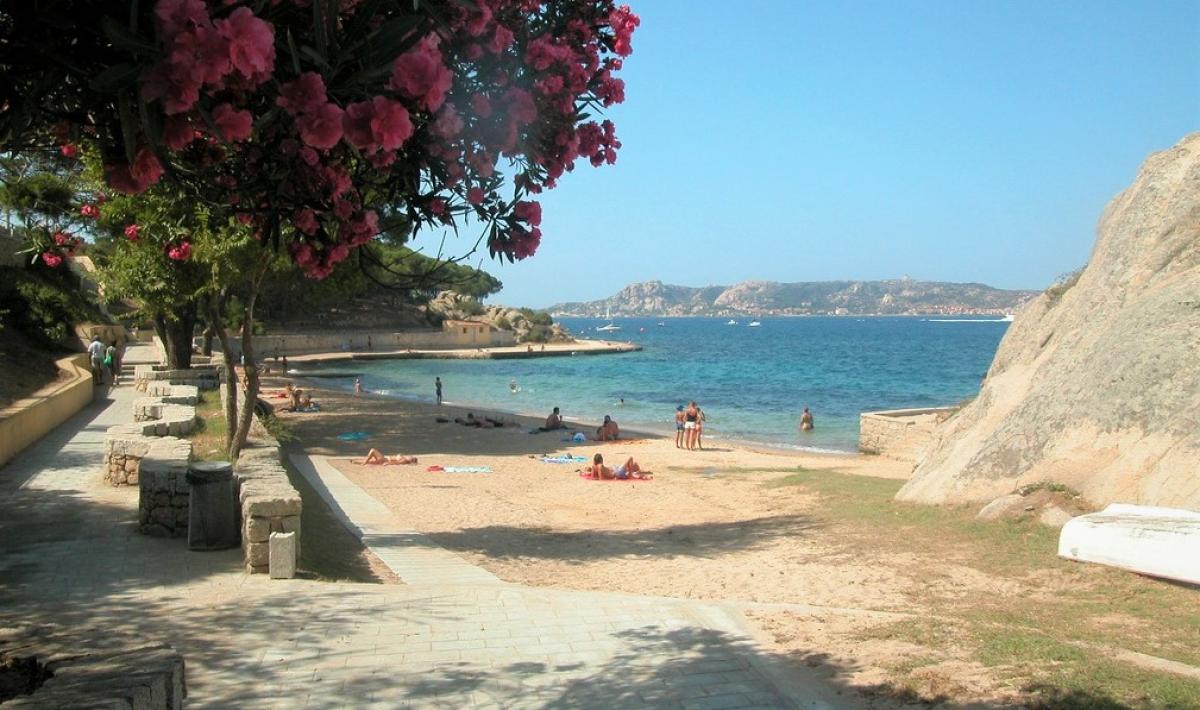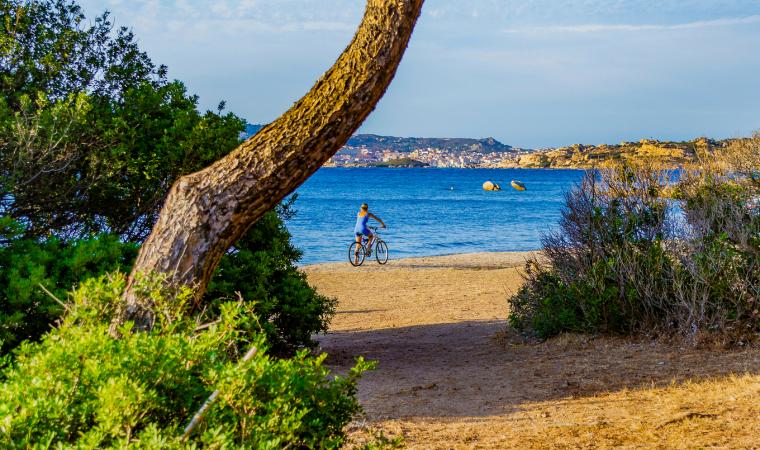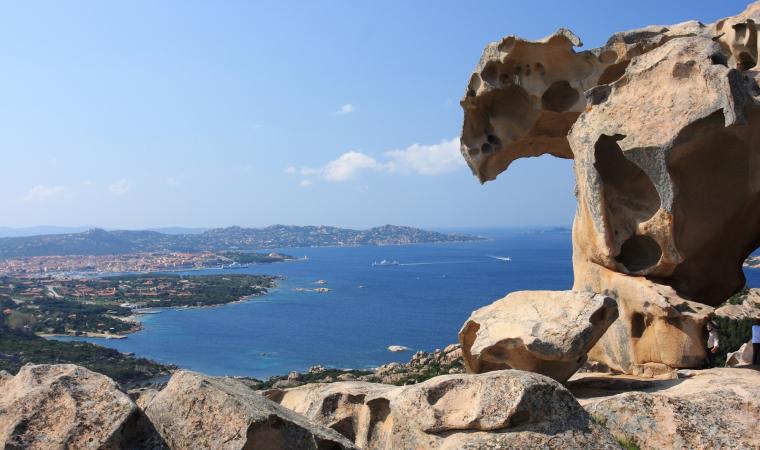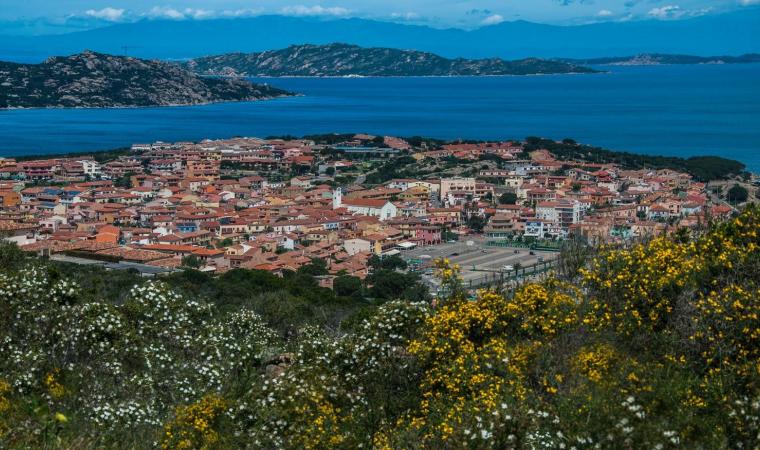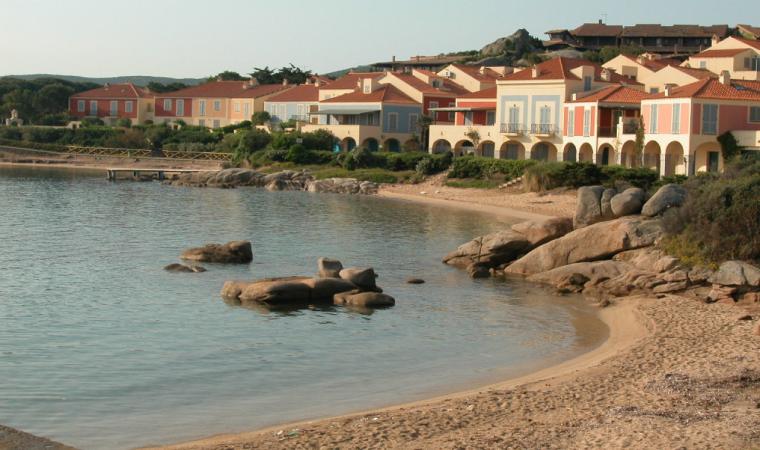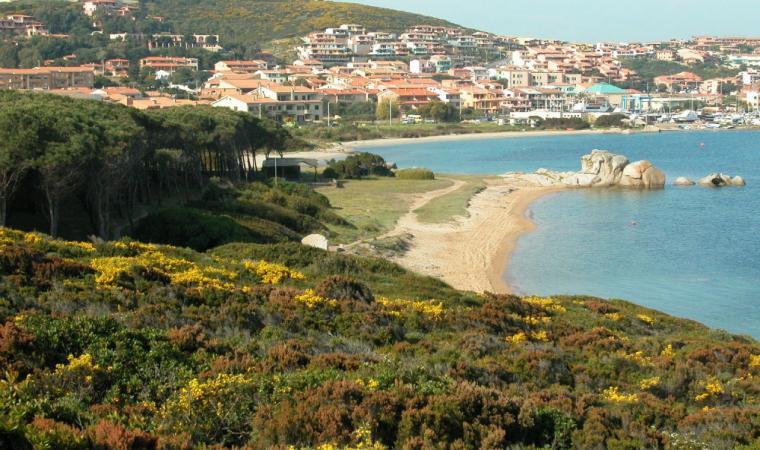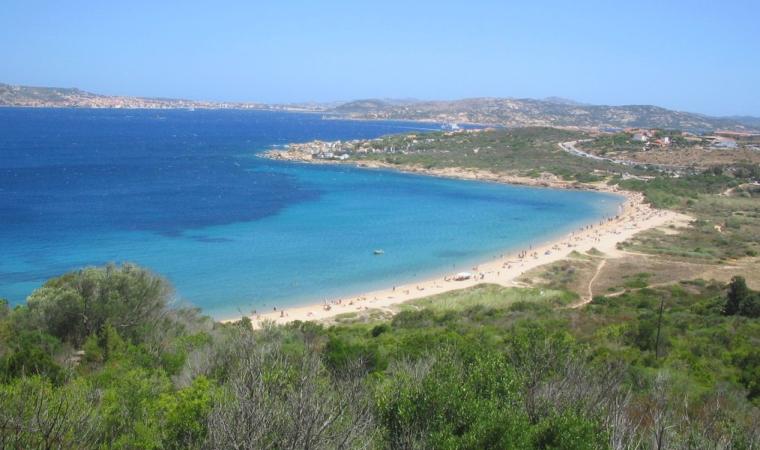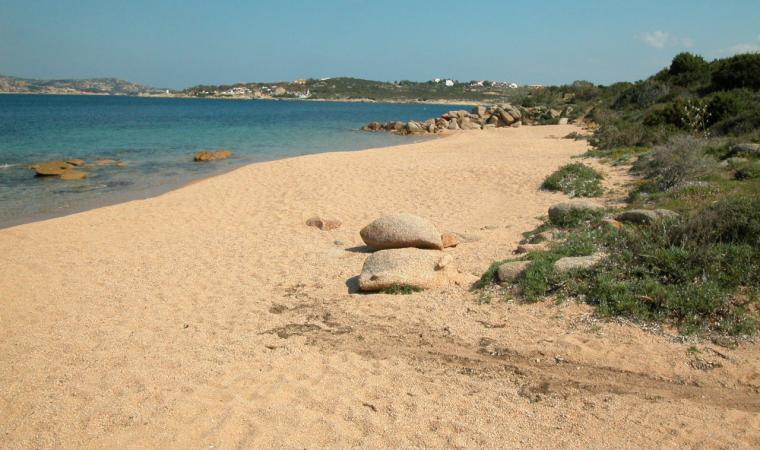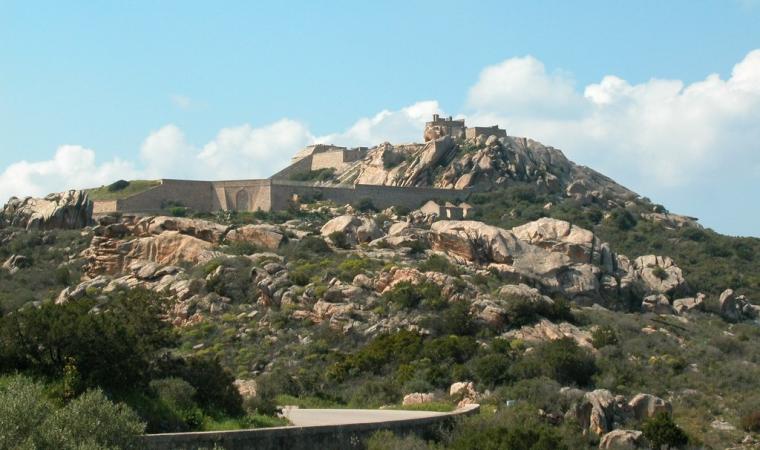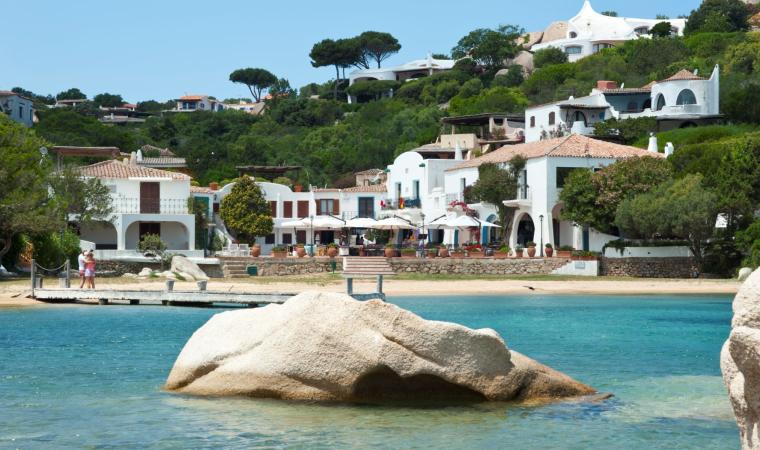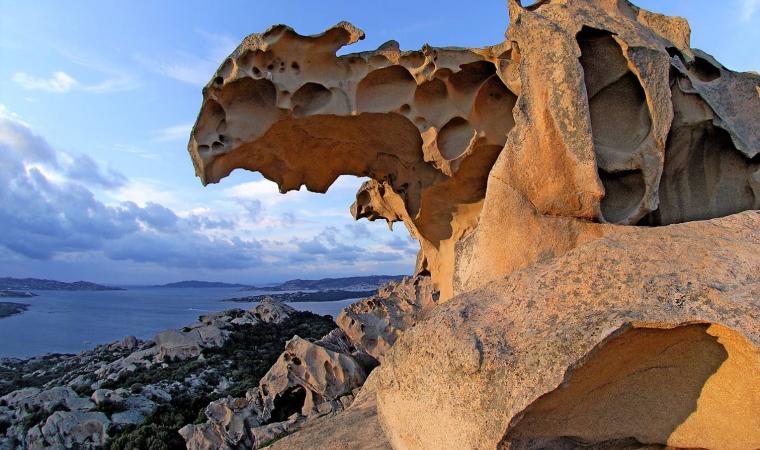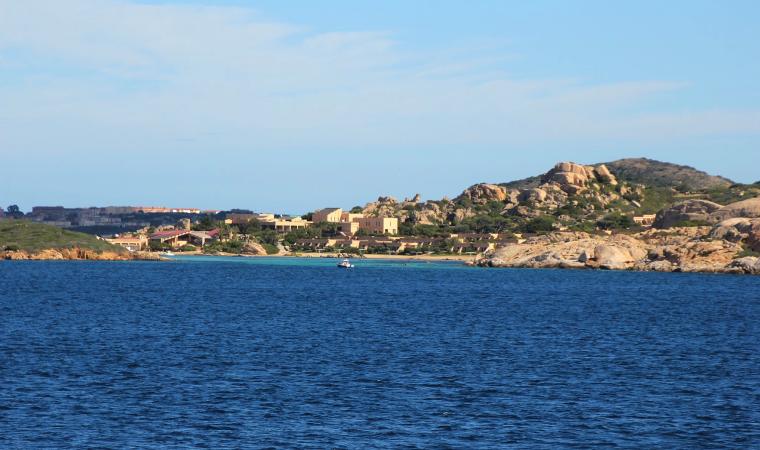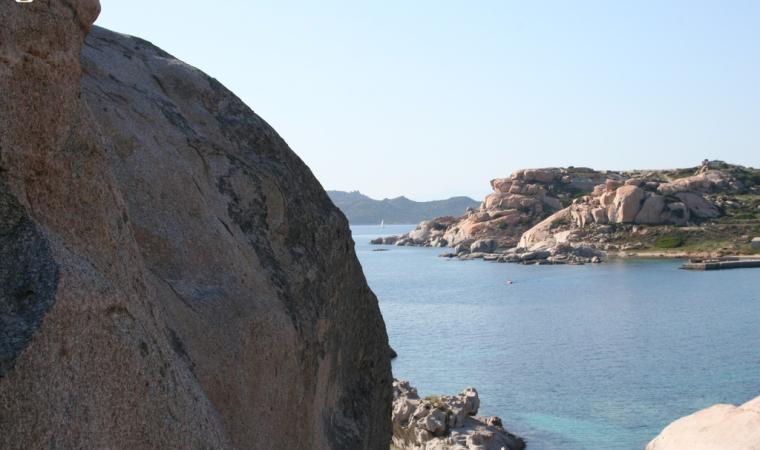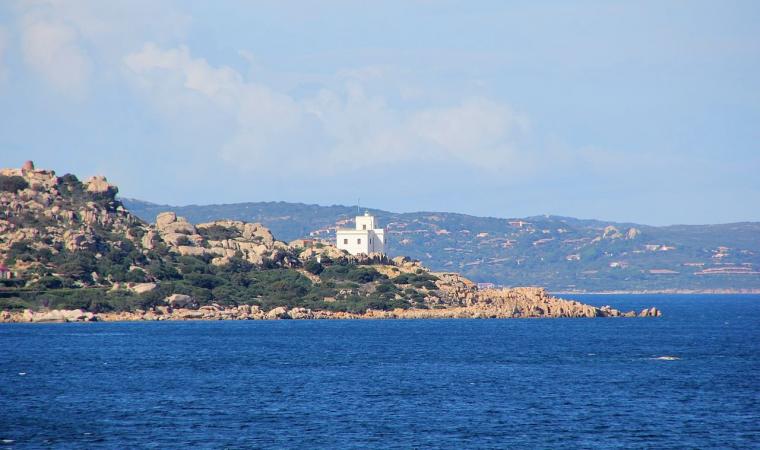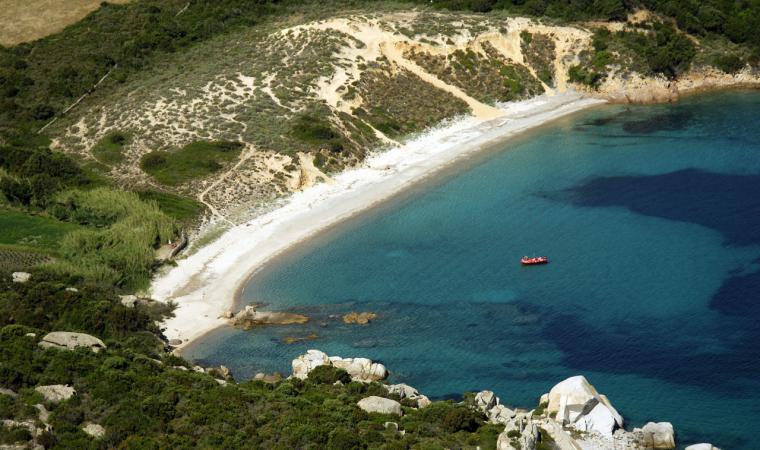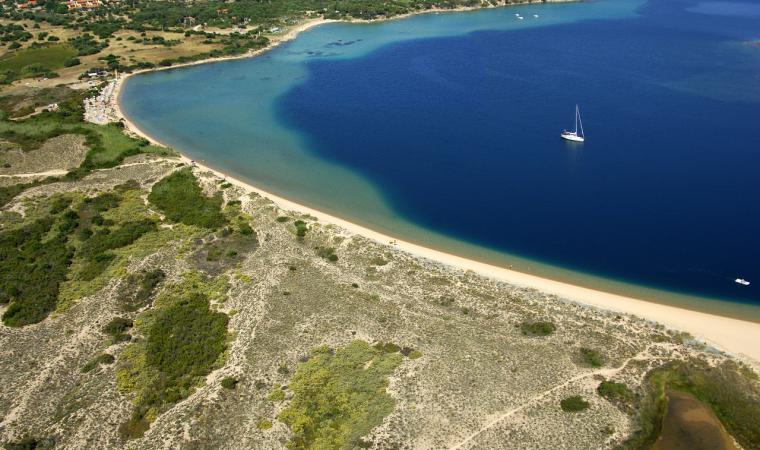The final part of the old railway follows the coastline for a few metres, offering a view of the open sea, and then the tracks, now travelled along by the stretch of the Trenino Verde tourist train, carry on alongside the pine forest, a short distance from the beach. A few steps lower down, there is a ‘carpet’ of golden sand, framed by a magnificent promenade and washed by crystal clear waters. Palau Vecchio is unforgettable, with its picture postcard landscape, enchanting and a little old-fashioned. The inhabitants of Palau are most fond of this stretch of coast and it has received the Blue Flag award from the Foundation for Environmental Education (FEE) several times.
The beach is ideal for families with children, thanks to the shallow waters and sandy seabed, and the pine forest guarantees shelter from the afternoon heat, while its transparent waters makes it a suitable destination for snorkelling enthusiasts. It is accessible to disabled people, with a wooden walkway leading directly into the water, while there are bars and refreshment points nearby. The view in front of the beach is spectacular: the sea, reflecting shades of emerald green and blue on the horizon, makes way for the outline of Santo Stefano, and behind it the two largest islands of the Archipelago National Park, La Maddalena and Caprera. Beyond the pine forest, the beach of Porto Faro is just a few steps away, stretching along an inlet and dominated by a distinctive lighthouse. The sand here is fine and white, with pink granite rocks emerging. The Mediterranean greenery almost reaches the sea.
Palau Vecchio is not the only beach in Palau to boast the Blue Flag award: it is accompanied by Isolotto, a small beach next to the tourist port, with similar features to Porto Faro: white sand, rocky outcrops and sea with shimmering colours.
A few kilometres separate the city beaches from the symbol of Palau, a monument sculpted by Nature, an exceptional artist: it is the Roccia dell’Orso (Bear Rock), with its head facing the sea, used as a reference point by sailors in ancient times. In the opposite direction, to the west of the town, other ‘pearls’ of the Palau coast appear: Sciumara, characterised by its creamy-yellow sand, thick Mediterranean scrub and a deep blue sea, and Porto Rafael, one of the first exclusively tourist villages to emerge in northern Sardinia, where white houses scattered across the greenery stand out.

